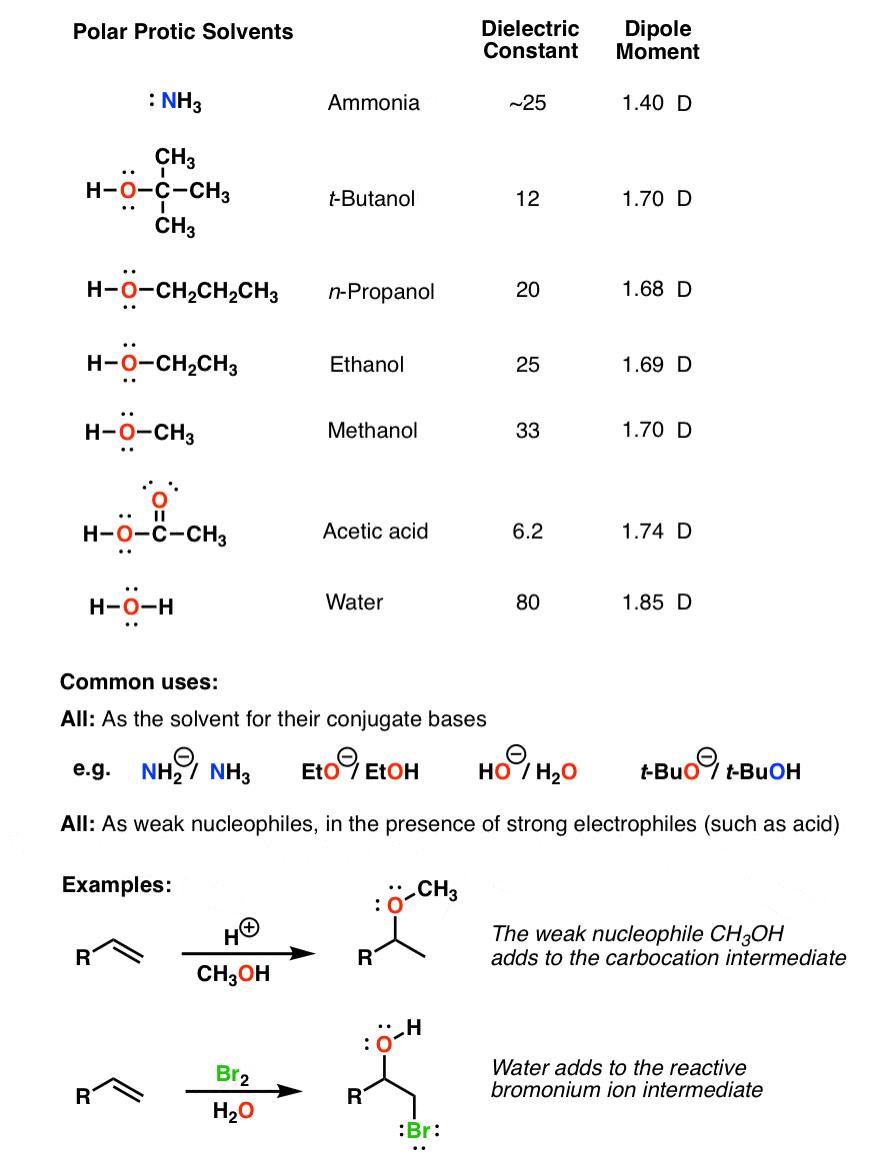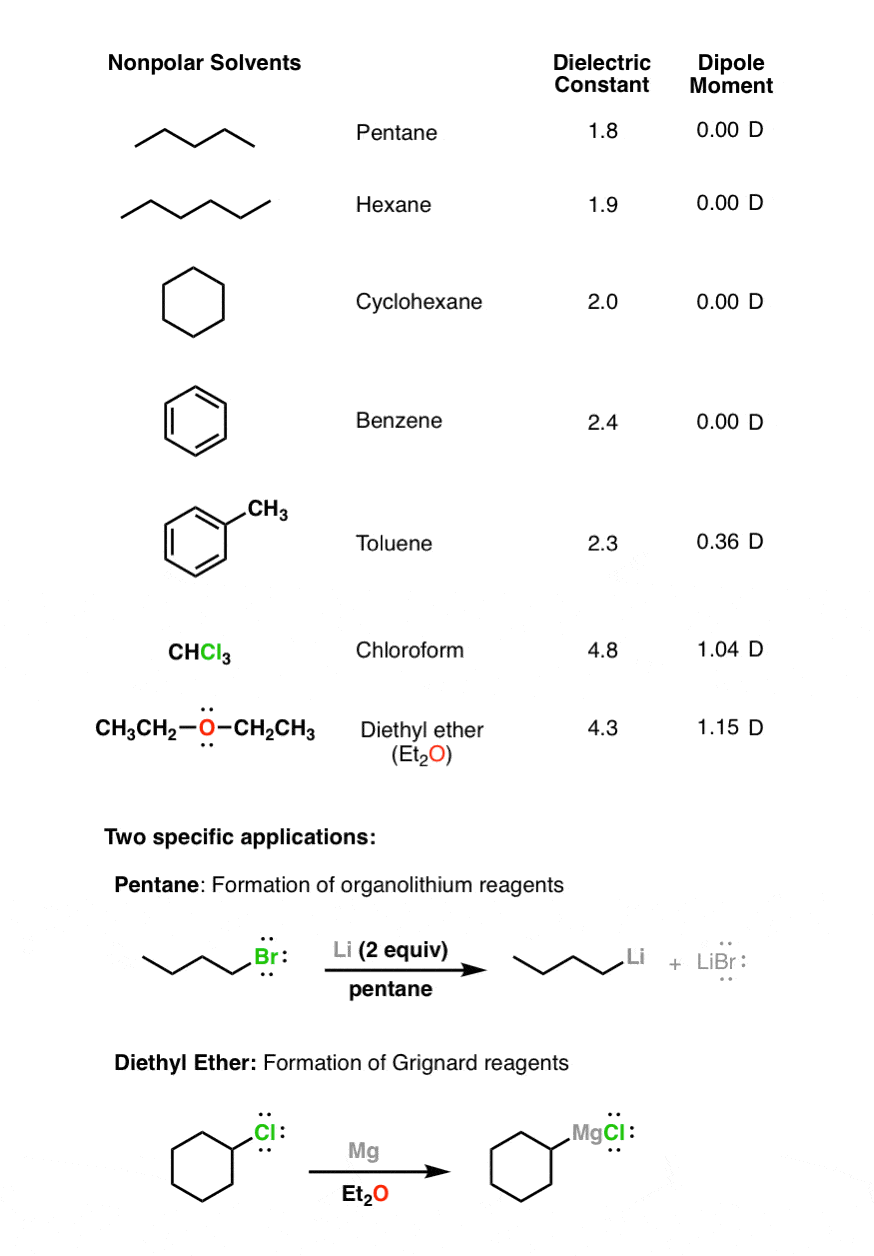Acetone Polar or Nonpolar Solvent
Acetone is also relatively safe organic solvent but you should still keep it away from fire and wear your mask and gloves. Chemical potential of the species i.

Polar Protic Polar Aprotic Nonpolar All About Solvents Organic Chemistry Hydrogen Bond Chemistry
Solubility functions by a group of rules that determine how dissolvable a substance solute is in solvent and depends entirely on the physical and chemical properties of the solute and solvent.

. Put the substance in question into the beaker filled with water and the beaker filled with the. An example of a polar solvent is water while ethanol is more. Each one has a slight dipole moment.
And as Like dissolves like try to dissolve your wax in toluene or in xylene. Wax is composed of heavy long-chain alkanes. This is because Like dissolves like that is pigments with a chemical composition similar to the composition of the solvent will dissolve better in that solvent and therefore move further up the paper.
As the nonpolar mobile phase moves through the medium it carries nonpolar samples with it. It should be noted that the latter is quite temperature-dependent videinfra. Chemicals in the nonpolar apolar classes include most of the conventional LPME extraction solvents while those in the polar solvent class include solvents used as auxiliary solutions in methods such as DLLME.
The polarity differentiation is done based on the dielectric constant of the solvents. Acetic acid undergoes decomposition when heated above 440C to yield either methane and carbon dioxide or water and ethanone given by the equations. Ethanol and acetone are not non-polar organic solvents.
Thin layer chromatography TLC is a quick sensitive and inexpensive technique used to determine the number of components in a mixture verify the identity and purity of a compound monitor the. Solvation or dissolution describes the interaction of solvent with dissolved molecules. Also any potential hydrogen-bond acceptor will tend to shift the water signal down-field.
The further up a sample goes the more nonpolar it is. This is particularly true for nonpolar solvents. Acetone is a volatile compound.
Polar solutes will dissolve better in polar solvents and nonpolar solutes will. This can be calculated. Nonpolar substances are not likely to dissolve to a significant degree in polar solvents.
A solvent from the Latin solvō loosen untie solve is a substance that dissolves a solute resulting in a solutionA solvent is usually a liquid but can also be a solid a gas or a supercritical fluidWater is a solvent for polar molecules and the most common solvent used by living things. Solvent containing 1 µL of TMS1 was first run on its own. They are not.
The most common three types of solvents in organic chemistry are apolar polar aprotic and polar protic. Equilibrium polymer volume fraction at the front S. Boiling point 69 C 156 F.
Hexane C 6 H 14 is used for nonpolar compounds. That is solutes typically will dissolve best in solvents that have the most molecular similarities. These three numerically ranked solvents are.
Phase is nonpolar then nonpolar pigments move further up the paper. Due to the difference of electronegativity between ceH and ceO in ethanol and between ceC and ceO in acetone. Samples are placed at the black O marks.
All the ions and proteins in a cell are dissolved in water within the cell. Acetic acid undergoes nearly all carboxylic acid reactions. Apolar or nonpolar solvents have low dielectric constants which refers to the electric charge between the molecules being evenly distributed.
For example nonpolar molecular substances like hydrocarbons are likely to be insoluble in water. Acetic acid is a polar protic solvent with a dielectric constant of 62 in its liquid form. For example nonpolar molecular substances are likely to dissolve in hexane a common nonpolar solvent.
Take up a quiz on Organic solvents. Both ionized and uncharged molecules interact strongly with solvent and the strength and nature of this interaction influence many properties of the solute including solubility reactivity and color as well as influencing the properties of the solvent such as the viscosity and density. Average volume of molecule of species i.
1 rather nonpolar and volatile solvents 2 nonpolar and nonvolatile solvents and 3 polar solvents. Water-free synthesis of Ti 3 C 2 T x MXene in ammonium dihydrogen fluoride NH 4 HF 2 dissolved in polar organic solvents eg propylene carbonate produces Ti 3 C 2 T x with a very large interlayer spacing of 21 to 51 Å depending on the solvent which was attributed to co-intercalation of NH 4 cation complexes with solvent molecules. Its low boiling point means that its more useful when used in conjunction with a dry iceacetone bath.
Owing to its ability to dissolve both polar and nonpolar compounds acetone is a strong solvent while other solvents can only dissolve one or the other. Compounds can be compared to each other using the retention factor R f. Place equal amounts of the substance into each beaker.
From this spectrum we determined the chemical shifts of the solvent residual peak2 and the water peak. Two additional guidelines are derived from these. Often used as solvent pair with another solvent.
Often used in a solvent pair. Concentration of species i. Pentane C 5 H 12 is widely used for nonpolar compounds.
Secondly since it is miscible acetone is a strong solvent ensuring it has the potential to blend in all amounts with water. Solvent volume fraction at which the glassygel transition occurred. Put your understanding of this concept to test by answering a few.
φ p eq. Thus those that do not move very far are more polar. It is not volatile but still acts as a nonpolar solvent.

Is Acetone Polar Or Nonpolar Techiescientist

Is C3h6o Acetone Polar Or Non Polar Youtube
Is Acetone Polar Or Nonpolar Quora

Polar Protic Polar Aprotic Nonpolar All About Solvents

Polar Protic Polar Aprotic Nonpolar All About Solvents

Polar Protic Polar Aprotic Nonpolar All About Solvents Nomenclature Chemistry Chemistry Help Chemistry Notes
Comments
Post a Comment